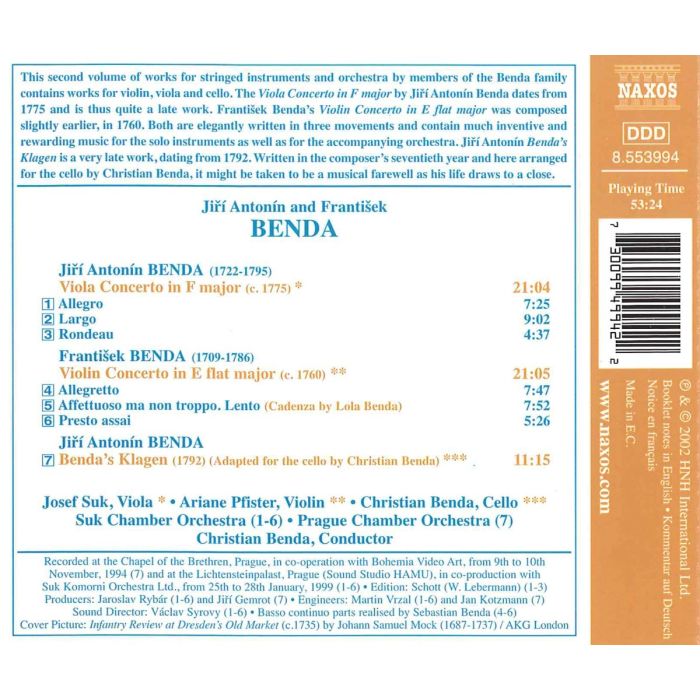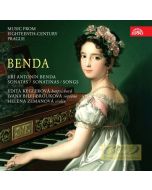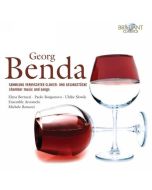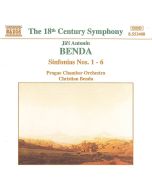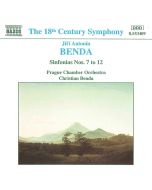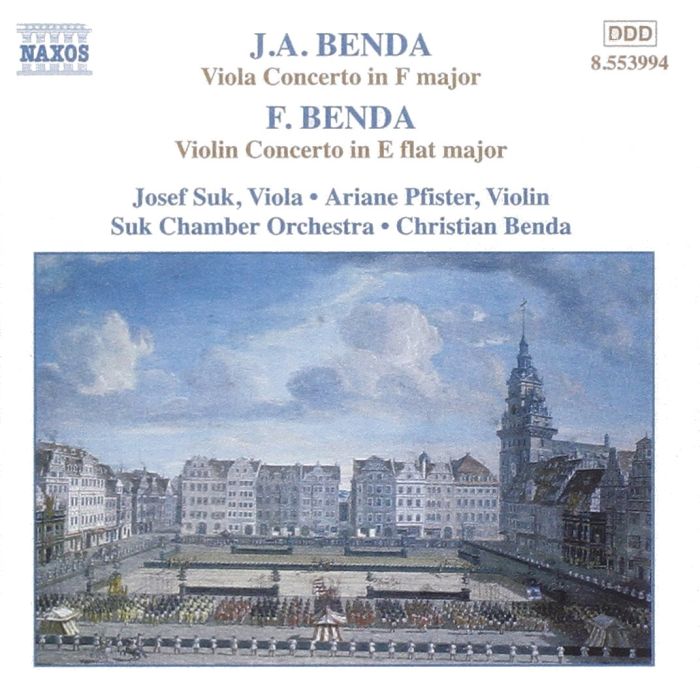
(Produkt nie został jeszcze oceniony)
kompozytor
różni kompozytorzy
tytuł
BENDA: Viola & Violin Concertos
pełny spis kompozytorów
Benda, Franz, Benda, Jiri
wykonawcy
Benda, Christian, Pfister-Benda, Ariane, Prague Chamber Orchestra, Suk Chamber Orchestra Prague, Suk, Josef
nr katalogowy
8.553994
opis
Georg Anton Benda’s Viola Concerto in F major, scored for an orchestra of strings, was written about 1775. It has been attributed by some to Georg Benda’s nephew, Friedrich Wilhelm Heinrich Benda, a son of Franz Benda, who was also employed at the Prussian court. The concerto opens with a well-defined melody, its bass at first provided only by the violas of the orchestra. The soloist enters with the principal melody double-stopped, returning with the first solo episode, accompanied only by the basso continuo, before providing a broken chord accompaniment to the principal theme, which recurs, framing solo episodes of increasing complexity, before the final cadenza. The F minor slow movement opens in a sombre mood, lightened at first on the entry of the soloist with an extended aria and culminating in a cadenza. The solo viola introduces the principal theme of the final Rondeau, which recurs in the orchestra to provide a framework for the intervening solo episodes. •
Franz Benda had a considerable reputation as a violinist and in the 1740s and 1750s had undertaken concert tours to various German courts, while at Potsdam he accompanied the King in the many evening concerts at the palace. His style of composition exemplifies the transition from baroque to classical, with slow movements that were particularly admired by his contemporaries, reflecting, as they do, his experience as a singer, both as a chorister and, in earlier days, as a tenor in Ruppin and Rheinsberg. •
The Violin Concerto in E flat major is dated to about 1760 and starts with a cheerful Allegretto, introduced by the orchestra, before the solo entry, the whole presented in textures of classical lucidity. The minor key slow movement, marked Affettuoso ma non troppo and Lento, provides a moving aria for the soloist. This is followed by a final Presto assai. Attention has been drawn to similarities of style with the work of his colleague at Potsdam, the then court harpsichordist, Carl Philipp Emanuel Bach, exponent of the Empfindsamerstil, in which the aim of music was to touch the feelings, a marked element of the slow movement of the concerto.
nośnik
CD x 1
wydawca
Naxos
data wydania
6.05.2002
EAN / kod kreskowy
730099499422
58,00 zł
Produkt na zamówienie
Wysyłka ustalana indywidualnie.
Darmowa wysyłka dla zamówień powyżej 300 zł!
Darmowy kurier dla zamówień powyżej 500 zł!
sprawdź koszty wysyłki